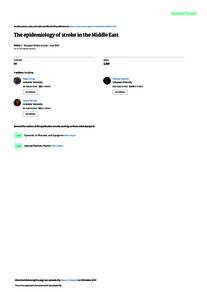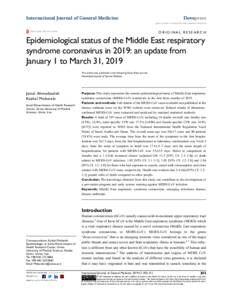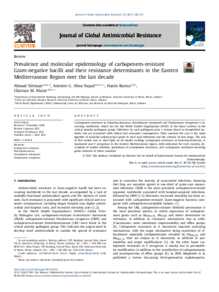Document
The Epidemiology of stroke in the Middle East.
Identifier
DOI: 10.1177/2396987316654338
Contributors
Publisher
SAGE Publications.
Gregorian
2016-09
Language
English
English abstract
Purpose: The purpose of this paper is to review and synthesize data from different countries in the Middle East on stroke and its potential risk factors. Method: A systematic review of all published stroke articles in the Middle East between 1980 and May 2015 was conducted. Findings: Sixty-four papers were included in the review. The incidence rate for all strokes ranged between 22.7 and 250 per 100,000 population per year. The prevalence rate for stroke ranged between 508 and 777 per 100,000 population. Among studies reporting gender differences, 75% reported a high male-to-female ratio among stroke patients. The mean age of stroke was within the sixth and the seventh decade. Ischemic stroke was the most reported type followed by intracerebral hemorrhage and subarachnoid hemorrhage. Hypertension was the most reported risk factor followed by diabetes. The overall case-fatality rate within one month was 12–32%. Discussion: During the last decades, there was an increase in stroke incidence and mortality rates in the Middle East. The Middle East faces low rates of self-awareness and control of noncommunicable diseases and also lacks knowledge for stroke risk factors, awareness, causes, and symptoms. Conclusion: There is an urgent need to develop more efficient and accurate methods to measure stroke in the Middle East. There is also a significant call to increase public awareness and implement interventions on stroke and its risk factors and symptoms to help people understand the negative impact of stroke on quality of life and potentially prevent this disease.
Member of
ISSN
2396-9873
Resource URL
Category
Journal articles



